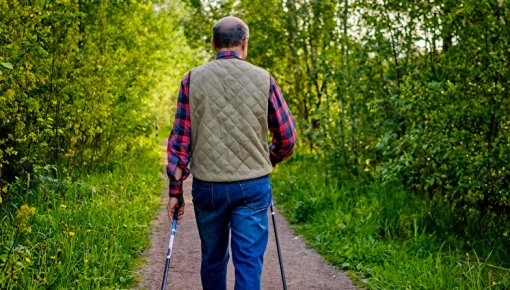My first knee replacement
About four years after the pain started, my doctor and I decided that I should have a total knee replacement in my left, worse, knee first. Everything went brilliantly! My knee seemed to almost become more and more mobile with every hour after the operation. It was incredible!
I felt very well taken care of by the doctor treating me, and the whole team was very attentive.
After my stay in hospital, I went to a rehabilitation program where I carried on doing exercises to improve my knee’s mobility. The new knee was doing brilliantly! I could climb stairs normally again. That took the strain off the right knee and we were able to put off an operation on it for a few years.
I wanted to wait with the operation on the other knee for as long as possible because an artificial joint doesn't last forever. But progress is being made in medicine all the time and, depending on the circumstances, a prosthesis can be replaced several times.

